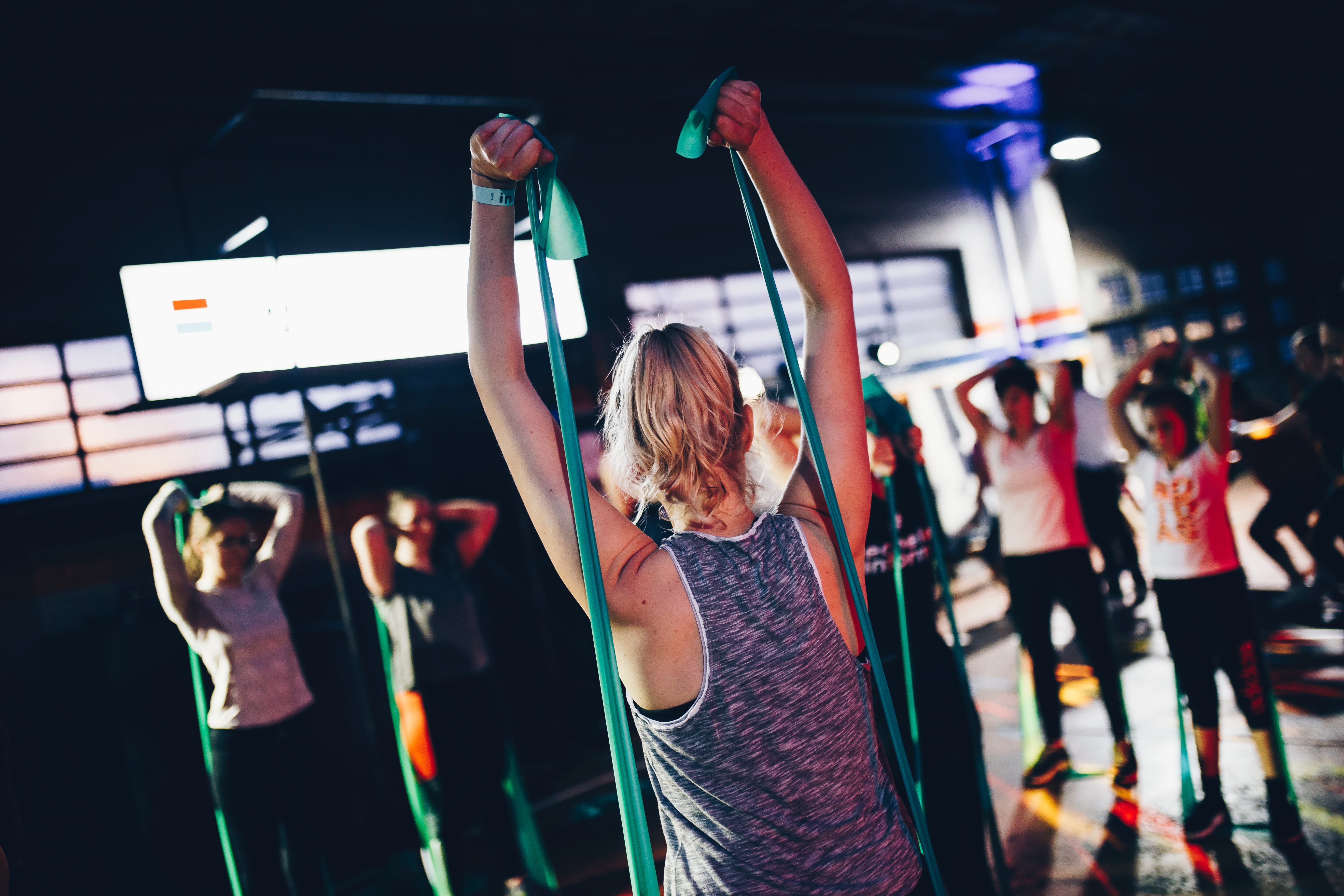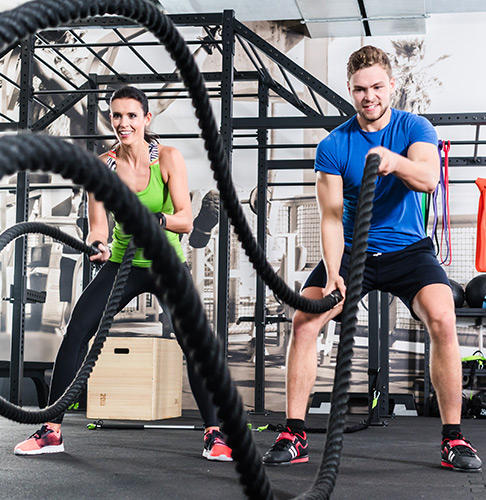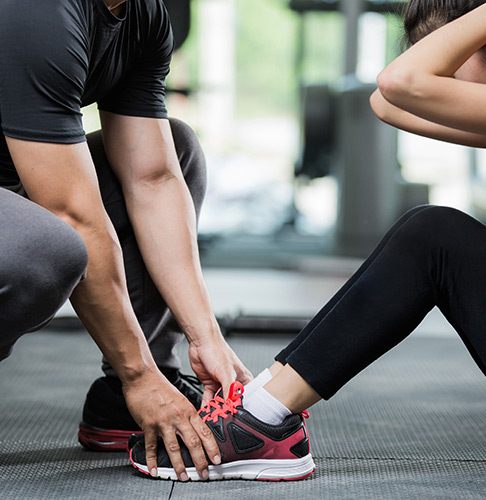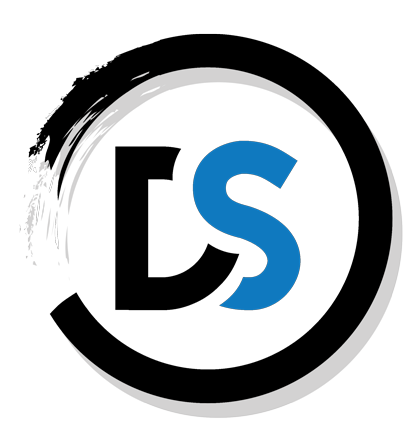If you’re just starting with a local high school team, that’s incredible. We need more people like you in the trenches for great long-term athlete development. I have no doubt your knowledge and training will provide immense value, but I also get that it can be intimidating. Teenagers are wild cards on their own. Not only that – working within the school system means balancing your expertise with funding constraints and the head coach’s vision. It can be a lot.
In order to pare down all of the noise, I’ve put together a few key factors to consider before designing a high school strength and conditioning program. They range from broad to specific, and tackle some of the most pressing questions high school strength coaches face.
First and foremost, consider the demands of the sport
A basketball game requires a different fitness level than, say, a wrestling match. Cheerleaders and distance runners don’t train the same way. Obviously, you won’t design the exact same program for every sport. Whether it’s injury considerations or energy systems, always program from the game backwards.
However, most high school athletes face the same struggles – overtraining in multiple sports combined with sitting for 6 hours in class. Fundamental movement patterns get lost in repetitive action. When tight, weak muscles are consistently asked to do the same high-speed movements, they reach a breaking point. Teaching teenagers how to control their bodies through instability goes a long way. And by that I mean landing safely from a jump or changing levels on one leg – not some crazy circus trick.
Make sure they can master the big rocks – quad dominant movements, hip hinge, push, pull, carry, and rotation – before moving to anything else. Your programming should develop proficiency in athletic movements first and foremost. Not only will it prevent injury, but it’ll enhance performance. Getting a kid to develop total body strength translates to total body power, which translates to speed and dominance in the game.
What’s the practice and game schedule?
Your average gen pop client can train whenever, however during the week, as long as it works towards their long-term goals. High school athletes, on the other hand, need to perform on game day. Not only that, but they still need to practice their sport. You can’t expect to hold four gym sessions per week if they interfere with practice times.
Before beginning, sit down with the head coach. Ask them about their training week, and how much time the team can commit to strength and conditioning. Learn about playoffs, mid-season breaks, or any pre-season camps they hold. These basic details not only provide you with a weekly outline, but they help identify key progressions and peaking points. If you want more details, read my article about questions to ask the head coach – you’ll find it very helpful when designing a program.
Don’t forget about individual player needs
When writing a program for the whole team, you want to include everyone. High schoolers in particular run the gamut of experience and readiness. Write for the freshman who’s never seen a gym, the guy coming off of injury, and the senior who took up powerlifting two summers ago. How can you do that? A few ways:
- Set up tiers
For example, for a main exercise, write “squat variation – 5×5” instead of “cambered bar box squat”. Set targets for certain “tiers” to ease sorting. Maybe you’ve the new ones on goblet squats, others on landmine squats, and the most advanced on front squats. But what about those coming off of a knee injury? You really do have to think about each individual player.
2. Injury history
Before you write anything, get a quick injury history of each player. Not only will it help your programming, but you don’t want to be surprised by a bad shoulder when it’s too late. Have adjustments at the ready for common injuries, even if they haven’t shown up yet. You know basketball comes with risk of ankle or knee injury, so when your point guard sprains his ankle during the big game, be prepared.
3. Individual load
Another big consideration is playing time. Here’s where the coach can help you out. Every team has athletes who play almost every minute. Who are they? How can you manage their total workload compared to someone who rarely sees the field? In general, athletes who tend to be practice players can be on a more off-season-style program. The kids who didn’t play at all might need a little extra conditioning after game day, while your starters are doing active recovery.
Are there any seniors prepping for college ball? It’s your job to help them prepare. Connect with their college’s S&C coach so you’re on the same page. If they’re going to be thrust in to heavy weightlifting on day one, build a strong foundation in those movements.
Furthermore, most high school athletes play other sports. If they’re not, they’re probably going to practice at AAU or another club outside of school. Add that to other extracurriculars, homework and studying, their weekend jobs, and everything else they’ve got going on – and it’s enough to give you a headache. Sometimes, less is more for these kids. It’s a mistake to program in isolation. If they had four hours of practice yesterday, are with you for two hours today, and have a game tomorrow, don’t run them ragged. They’ll get more out of light activity that revitalizes their systems than your 5/3/1 squat program.
The bottom line here is to simply get to know your athletes. Work closely with the head coach to individualize the team program as much as possible, and the results will follow.
Now to the good stuff – The actual program design
After all of that, you’re probably facing a realization – there’s not a lot of time to truly train your athletes in season. If you can get them during the off-season, that’s a different story. But most fill that time with other sports and commitments.
Therefore, when writing a high school strength program, answer one simple question – what provides the biggest return in our short time together?
Step 1: I cannot stress this enough. For high school athletes, the answer should always ALWAYS be movement quality first. Help them move well, and you’ll make a huge impact.
It might not be cool or super fun to work on dynamic hip stability. Teaching them to control a body weight sprinter step up goes way further than wasting time on a barbell hang snatch before they’re ready for it. Sports happen in unstable, unpredictable conditions. Landing safely, avoiding knee valgus, and basic scapular positioning are invaluable tools. Teach technique first, progress through rep ranges, and prevent injury.
As far as the exercises go, program around the following categories first:
- push
- pull
- quad dominant
- hip hinge
- single leg work
- carry/rotation
Cover those bases, and you’ll be grand. It doesn’t take anything fancy. Remember, always build a strength foundation first.
Step 2: Follow up with injury prevention and prehab
After the basics, throw in core work and sport-specific accessories. Add in preventive exercises for common injuries as well, such as banded shoulder work for baseball. These can be incorporated between the main lifts. Banded ankle inversion/eversion won’t ruin subsequent sets of pull ups, but it sure saves time.
On the other hand, you could spend 30 minutes at the beginning on an entire prehab routine. But good luck having time left for anything else. Injury prevention is important, so don’t completely neglect it. Just program it around your big rocks to maximum efficiency.
Step 3: Carefully add explosive movements and conditioning
It’s no secret that athletes need power development and fitness. It’s kind of crucial to sports performance, so why am I putting it last?
Answer: they’re already doing it.
Practices, games, pick-up, other teams they play for – all of these are opportunities to develop explosive speed. Their growing bodies are already pounding the pavement for hours each day. They probably don’t even realize how much “conditioning” they do in a game. If they have two games per week, do they really need more high-intensity work with you?
Schedule these exercises and their total workload around the demands of the season. Minimize joint impact in any plyos or conditioning you do with them. Their bones, muscles, and joints are actively growing underneath the season’s demands, and you risk injury by adding more. Medicine ball throws are awesome low-impact plyometric options. Sled pushes or bike races create a bit of competition without risking stress fracture.
Use these interventions wisely. Push them a bit during pre-season or bye weeks while they’re fresh. Talk to the head coach about the running they do in practice. Manage their well-being through constant communication and on-the-spot adjustments, and you’ll be on the right track to success.
Detric Smith, NSCA CSCS, ACSM EP-C, Pn-1 is the owner of Results Performance Training (www.resultsperformancetraining.com) in Williamsburg, VA. He has a BS in Kinesiology from Virginia Commonwealth University and specializes in Sports Performance Training and Fat Loss Transformations. For over 15 years he has gained experience at various sports performance centers and personal training studios, as well as coaching and teaching physical education from elementary school to high school.






